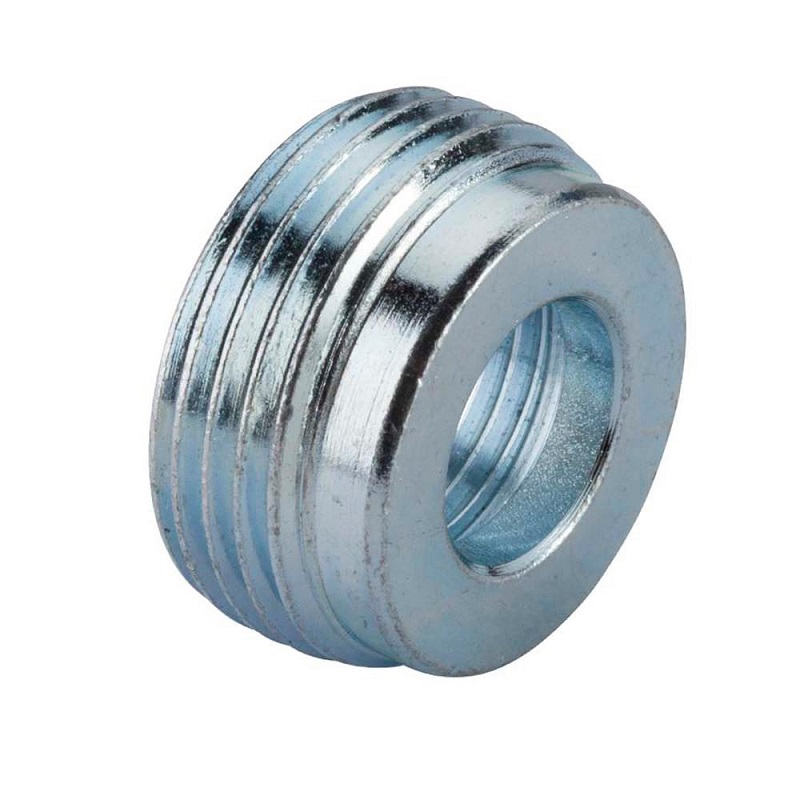Metal Bushing is a metal cylinder installed between mechanical parts to support shafts or pins, reduce friction, and absorb vibration and shock. It is usually used in areas where relative sliding contact is formed between moving parts to protect the main structural parts and extend the life of the equipment.

Application:
Shaft support and guidance: used to support rotating shafts or reciprocating shafts in rotating parts to achieve smooth movement.
Clearance compensation: adjust the fit tolerance between shafts and holes during assembly to prevent excessive wear or poor operation.
Shock absorption and buffering: absorb vibration and shock caused by movement to improve the stability of equipment operation.
Anti-wear protection: as a replaceable part, it protects the main structural parts from wear and fatigue damage.
Lubricating medium support: some bushings have self-lubricating ability or facilitate the storage of lubricating grease to enhance the smoothness of movement.
Bronze: tin or aluminum is added to the copper alloy, which has excellent wear resistance and low friction coefficient, suitable for high-load occasions.
Brass: copper-zinc alloy, moderately priced, good mechanical properties, suitable for medium-load applications.
Carbon Steel or alloy Steel: high strength, impact resistance, often used in heavy-duty or high-speed mechanical equipment.
Stainless Steel: corrosion-resistant, suitable for humid, acidic, alkaline or high-temperature environments, such as food machinery or chemical equipment.
Bimetallic: steel back + copper base combination, both high-strength support and wear resistance, suitable for heavy machinery and engines.
Powder metallurgy oil-containing material: the internal porous structure contains lubricating oil, which can self-lubricate and is suitable for locations with limited space or infrequent maintenance.
Features:
Simple structure: The metal bushing structure is usually a hollow cylinder, which is easy to design, manufacture and replace.
Flexible use: It can be used in a variety of mechanical movements such as rotation, reciprocating or swinging.
Dimension standardization: Most bushings meet industrial standards, have strong versatility and are easy to replace.
Support multiple lubrication methods: dry friction, oil lubrication, self-lubrication, etc. can all be supported to adapt to various working conditions.
Heat treatment and surface treatment: improve surface hardness and corrosion resistance through quenching, chrome plating, phosphating and other means.
Easy installation: Quickly install on the main structure by pressing, heating expansion or bonding.
Long service life: As long as the materials are properly matched, it can maintain stable performance under high load and frequent movement environment.
Advantages:
Reduce maintenance costs: When wear occurs, only the bushing can be replaced instead of the whole machine component, reducing maintenance expenses.
Extend equipment life: Reduce fatigue and cracks by preventing direct contact between metal parts.
Improve work efficiency: Stable guidance and low friction performance help the equipment to run smoothly at high speed.
Wide adaptability to the environment: Whether it is dry, high temperature, corrosive or humid environment, there are suitable materials to choose from.
Improve mechanical structure layout: When it is inconvenient to arrange rolling bearings, bushing can simplify mechanical design and space requirements.
General and customized coexistence: There are both standardized series that can be purchased directly, and special sizes or performance can be customized according to customer design.
Improve product reliability: Enhance the operating stability and safety of equipment under high load and high frequency conditions.
FAQ:
Does Metal Bushing need to be lubricated frequently?
Whether lubrication is required depends on the material and the use environment. Oil-containing bushings or self-lubricating materials such as powder metallurgy copper-based materials can reduce the frequency of lubrication. For steel or copper alloy bushings, it is recommended to add lubricating grease regularly to maintain optimal performance in heavy-load or high-speed operation situations.
What should be paid attention to when installing Metal Bushing?
Before installation, the matching hole diameter should be checked to ensure that there is an appropriate interference fit. Avoid deformation caused by knocking. It is recommended to use a press-in tool or heating expansion method for installation. In addition, if the bushing is self-lubricating, it should be avoided from contact with excessive detergents or solvents to prevent the loss of lubricating oil.
What equipment is Metal Bushing suitable for?
It is suitable for a variety of industrial equipment, such as automobile engines, hydraulic cylinders, motors, compressors, agricultural machinery, fans, conveying systems, mold sliding guides, etc. Metal bushings can be used in all parts where there is a need for relative sliding, vibration or gap adjustment.
How to choose the material for Metal Bushing?
The selection of materials requires consideration of the use environment (whether it is humid, high temperature, corrosive), load size, movement frequency, lubrication method, etc. If it is in high load or impact situation, it is recommended to use bronze or alloy steel materials; if it is in low speed and maintenance is inconvenient, self-lubricating bushings can be selected.
How long is the life of Metal Bushing?
The service life depends on the material quality, assembly method, use environment and lubrication conditions. Under suitable working conditions, high-quality metal bushings can be used for more than thousands of hours. Regular maintenance and correct selection will greatly extend its service life and reduce the risk of failure.





 English
English

